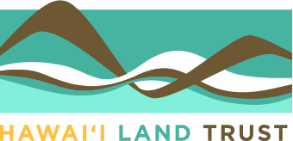In Loving Memory of Diannah La`i Goo
Diannah Goo with Scott Fisher at Waihe`e in 2006.
It was a really simple question. I saw Diannah one day in January of 2004 at Roundtable, at the Waihe`e Refuge. I knew her son had died in a tragic boating accident in 1988 just offshore from Roundtable, so I asked her if she would like to put up a small memorial there, and that I would be happy to keep the flowers watered. That question began a friendship that lasted over 16 years, until Diannah La`i Goo passed away on March 31st 2020, just one day short of her 85th birthday. I was incredibly fortunate to know her, and to have had the opportunity to learn from her.
Her knowledge of Waihe`e was encyclopedic, and so much of what I have learned about this wahi pana we now call the Waihe`e Refuge came from her.
Diannah was born in Waihe`e on April 1st 1935, where her father, David La`i Sr., worked for the Waihe`e dairy delivering milk and meat to the employees of Wailuku Sugar, from Waikapū to Waihe`e. Diannah spent a considerable amount of time with her grandparents, who worked their family taro patches at Wai`auku`u in Waihe`e Valley. She also spent a lot of time at the family’s beach house in Kapoho, which her grandfather built around 1905 (she always laughed about how, with seven siblings, they would pile into the one-bedroom home). The rock and concrete depression over which the home stood remains visible to this day, and Diannah pointed out when we were clearing the kiawe and koa haole around it that the rock-lined pit was used to store their nets when the family returned to Wai`auku`u to resume their taro farming. On the day when we re-exposed this foundation, we could see her reminiscing back some 65 years to how it looked before the 1946 tsunami, which destroyed the building, and to the days before the second world war, when they made regular trips to the ocean to harvest limu, he`e and fish.
At the end of that workday, a large number of black tipped reef sharks appeared. It was a hō’ailona that I will never forget. When Diannah’s brothers, George and Milton, passed away a few months apart, we planted two hala she had gathered at Wai`auku’u next to the house foundation in memory of her brothers, who had hala i ka po – passed into the night.
Early on, Diannah befriended our summer interns at the Refuge, and she regularly worked alongside us as we cleared the invasive species in the fishpond. Although she was in her early 70s at the time, there seemed to be nothing that she couldn’t do, and we all valued her presence, especially when she told us stories about growing up in Waihe`e, and the stories she had learned from her grandmother, Rebecca Nu’uhiwa, a noted historian of Waihe`e. Diannah shared with me several audio tapes Mary Kawena Pukui had recorded at Bishop Museum with Rebecca Nu’uhiwa. It became clear that Rebecca had chosen her haumana well, as Diannah became the ideal student, with an incredible memory for the places and stories that make Waihe`e so special.
When my own mother became sick with Ovarian cancer in 2007, Diannah visited her regularly, something my mother appreciated so much. Diannah’s wisdom was matched by her kindness and compassion for everyone she met. Her willingness to teach, her patience in communicating to those who wished to learn, and her gentle kindness are her enduring traits.
Photo of Diannah taken by the Wall Street Journal for an article detailing the fight for water rights by Na Wai ʻEhā.
Diannah always looked to learn more, and later in her life she became passionate about her genealogy. She often pointed out that she was 15/16ths Hawaiian, as a grandparent many generations back had been Chinese. One day, as she was working with us on the Refuge, she mentioned that her great-grandfather had died at Kalaupapa around 1902 or so. A friend of mine, founding Maui Coastal Land Trust board member Claire Cappelle was working as the Post Master at Kalaupapa, so I reached out to her to see if it might be possible to arrange a visit to the cemetery where her grandfather might be buried. Claire put me in touch with the National Park staff at Kalaupapa, and we arranged to have a plane drop us off at Kalaupapa. We spent five days in Kalaupapa, making several trips to the cemetery that held the remains of Diannah’s great-grandfather. Although the markers on the grave had long since disappeared, we were able to find the area that held the remains of her kupuna kane. It was a special time we spent together in Kalaupapa, and I was so happy to give back to someone who had given so much to me.
Several years ago, we made our final trip to her family home and taro patches in Wai`auku`u with my two children accompanying us. I could only hope that they enjoyed their time with her as much as I always did. She had watched them many times (and taught my son to catch crabs on the beach; although he never developed a taste for raw crabs the way she did). To her she was Grandma Goo, and although they may not remember the details of the stories she told, she taught them something profoundly important, the wisdom of the kupuna, our ties to the land, and the power of kindness. In Diannah’s life we see what makes Hawai`i such an amazing place, our connection to both the land and our families, the willingness to accept others, and welcome them into our lives, and a commitment to creating a future filled with generosity and kindness. In that way, Diannah may be gone, but she is with us all when we put these values into practice.
— Written with love and gratitude by Dr. Scott Fisher


